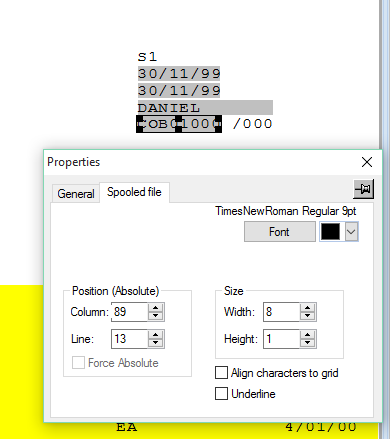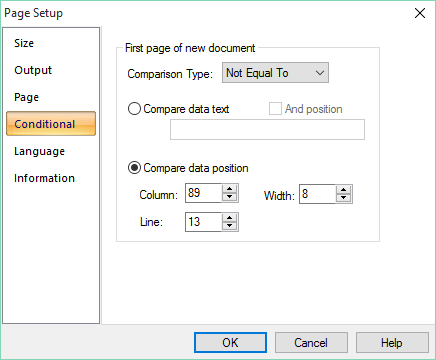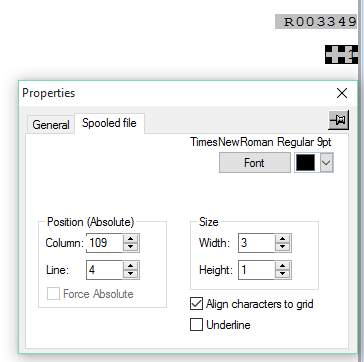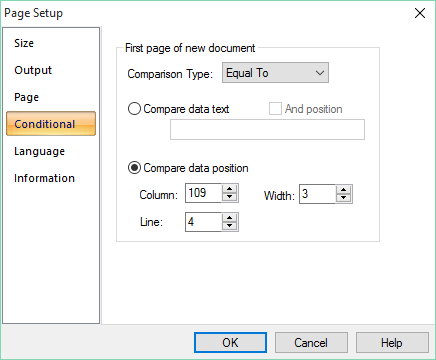Please enable JavaScript to view this site.
Why do you need Page Selection?
If your Spooled File just contains one document such as an Invoice or Purchase Order etc. then page splitting is unnecessary but a lot of the time a Spooled File contains several documents, each of which may have a varying number of pages, and it is useful to know, when designing your output, whether you are at the beginning or end of a particular document. For instance you may wish to add Terms and Conditions after the last page. This is done by using the Input Page Selection in the Cobwebb Designer. You may also wish to split up your Output into individual documents, particularly if you are Emailing or Archiving your output - this is called Output Page Selection.
There is a Page Selection Tutorial video which may help you better understand the concept of Page Selection.
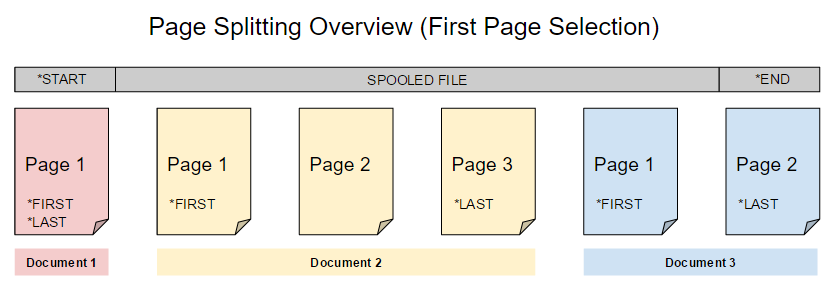
Configuring Input Page selection
The first thing to be done is to identify how the Cobwebb Designer can determine that a particular page in the Spooled File is the start of a new document. There are two ways of doing this.
Spool File Properties |
Page Setup |
Not Equal To The most common is to use data from the Input Spooled File that remains the same on every page of the document such as an Invoice Number, Purchase Order Number etc. This works by storing the data at the position specified and as soon as it finds a page where this is different i.e. Not Equal To, then this is the start of a new document. |
|
Use the Spooled file icon
|
Now select Page Setup from the File menu and click on the Conditional tab. Select the Comparison Type as Not Equal To Click on the Compare data position radio button and enter the same Column, Width & Line information as is displayed on the Spooled file Properties.
|
Equal To An alternative way of splitting up your Input Spooled File is, if it contains information that is only on the first page of the document. For example "Page 1" on the first page of each new document. This works by storing the data at the position specified from the very first page of your spooled file and then and as soon as it finds a page where this is exactly the same data in the same position i.e. Equal To, then this is the start of a new document. |
|
Use the Spooled file icon
|
Now select Page Setup from the File menu and click on the Conditional tab. Select the Comparison Type as Equal To Click on the Compare data position radio button and enter the same Column, Width & Line information as is displayed on the Spooled file Properties.
|
Using Input Page selection in your Design
Once Input Page selection has been configured you can start to use this in your design. This is done by using the Conditional Element.
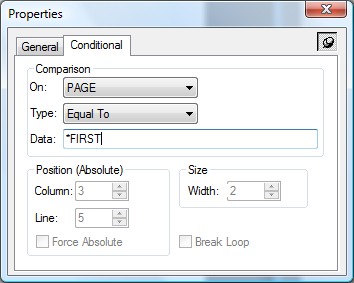
Select the special PAGE variable from the On drop down selection and then pick a Type usually Equal To if you are going to use one of the Input Page selection options. In the Data you have several Input page selection options which you may use (please note that these are all case sensitive):
*START |
This condition will only be met once in every spooled file on the very first page. Often used by the Advanced Reformatting Utility to specify the *FIRST call. |
*FIRST |
This condition will be met on the first page of a new document i.e. when an Invoice Number changes. Could be used to retrieve destination information such as an email address or fax number. |
*LAST |
This condition will be met on the last page of a document. Could be used to add Terms and Conditions. |
*END |
This condition will only be met once in every spooled file on the very last page. Often used by the Advanced Reformatting Utility to specify the *LAST call. |
Output Page selection is all about splitting up your Output into individual documents whether it is Print, Fax, Email, File or Docstore. Output Page selection is configured using the First Page Address element in your selected Output Device and this information is copied to the Page tab for your selected Output Device. Note: Address elements are selected from the Output pane and only picked up from the First page of any new document.
Output Device |
First Page Address element |
This is used to select the data to breakdown your output into individual spool files. |
|
This is used to select the data to breakdown your output into individual fax messages. |
|
This is used to select the data to breakdown your output into individual email messages. |
|
This is used to select the data to breakdown your output into individual files. |
|
This is used to select the data to breakdown your output into individual files for storing in Docstore. |
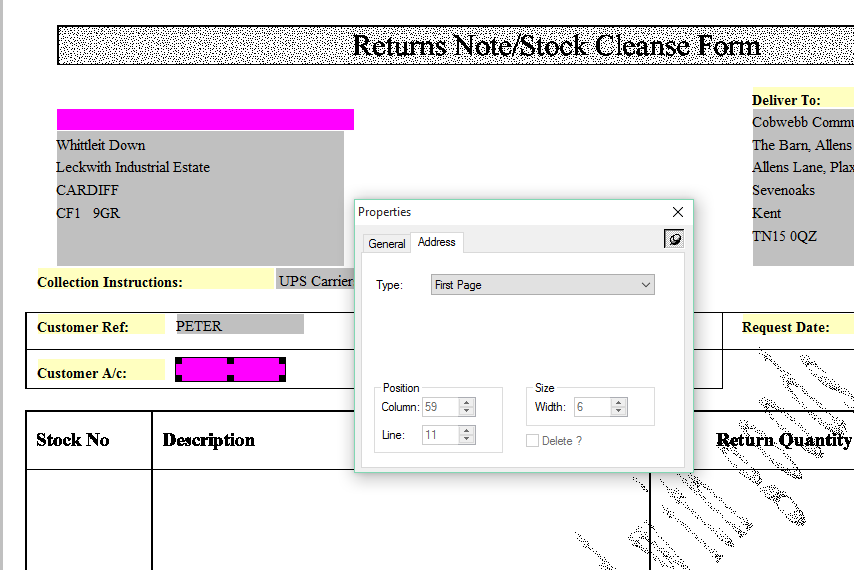
In the above example you can see that we have selected the Customer Account number from the Output pane for the First Page Address element.
Note: The Delete box is not enabled for the First Page Address element but you can do this by going to the Page tab for your Output Device and change the Comparison Type to be one of the entries suffixed (Delete) e.g.
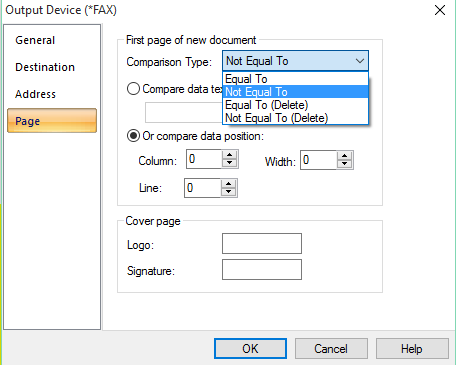
 to select the data on the Input pane and display the
to select the data on the Input pane and display the 